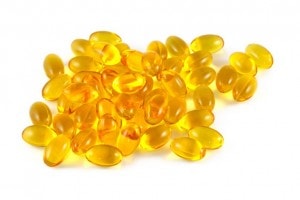Is Vitamin E Important for Cartilage Health?
Of all of the traditional vitamins, vitamin C has been known to play a big role in cartilage and connective tissue metabolism since the days of sailors and Scurvy and the British Empire handing out citrus as a medicinal. How about the other vitamins? Vitamin E seems to pop up a lot on medical literature searches of supplements and cartilage. So what’s out there to suggest that taking vitamin E for cartilage health might be a good idea to help your knees or other joints? One recent study interestingly found less vitamin E in the synovial fluid of patients with knee osteoarthritis compared to patient’s with acute knee injuries. While the role of antioxidants and arthritis has gotten much press, there was no difference in antioxidant levels between these two groups. The problem with this study is what came first, the chicken or the egg (i.e. did the lack of vitamin E cause the arthritis or is there something about arthritic patients that makes them deficient in Vitamin E)? Vitamin E has long been known for it’s anti-oxidant properties and in one study, it was able to quench the damging oxidant effects on cartilage caused by a mycobacteria contaminant found in grains. In yet another study, cartilage cells were overloaded with too much cyclic pressure (like walking in an obese patient) which caused cartilage cells to begin to die off. In this study, vitamin E and a variety of other antioxidants were able to protect the overloaded cartilage from dying. In another study, Vitamin E was also able to protect cartilage cells from the negative effects of quinalone antibiotics (like Cipro and Levaquin). These antibiotics are the most perscribed in the United States for problems like urinary tract infections and are now known for their nasty negative side effects on connective tissue. I’ve also already blogged on how vitamin E can protect cells from steroid induced bone damage that can lead to osteonecrosis. How about in the real world? Meaning are there studies on people where Vitamin E intake is tested versus cartilage health? In one large study in 2007, various anti-oxidants were tested versus MRI findings of cartilage thickness and/or cartilage health. The superstar of this study was Vitamin C, which did seem to be associated with better cartilage health on MRI (less bone marrow lesions). Vitamin E didn’t really have much of an impact on MRI appearance of cartilage or it’s thickness. Another older study (vitamin E vs. placebo) confirmed the same lack of real world effect of vitamin E on protecting cartilage volume. The upshot? Vitamin E appears capable (like other antioxidants) of protecting cartilage cells from oxidative stress and premature death associated with a variety of insults including chemical damage and excessive mechanical loading. However, it doesn’t appear to be associated with real world protective effects on cartilage. Based on the research, one might consider this supplement to protect cartilage from the adverse stresses of being overweight or from medication induced damage (such as steroids or antibiotics like Cipro or Levaquin).

NOTE: This blog post provides general information to help the reader better understand regenerative medicine, musculoskeletal health, and related subjects. All content provided in this blog, website, or any linked materials, including text, graphics, images, patient profiles, outcomes, and information, are not intended and should not be considered or used as a substitute for medical advice, diagnosis, or treatment. Please always consult with a professional and certified healthcare provider to discuss if a treatment is right for you.

